– Today we are pleased to introduce Peter Shrake as part of the Wisconsin Historical Museum’s History Sandwiched In lecture series. The opinions expressed today are those of the presenter, and are not necessarily those of the Wisconsin Historical Society or the museum’s employees. Peter Shrake is the archivist at the Robert L. Parkinson Library at Circus World and the author of the book “The Silver Man: The Life and Times :of Indian Agent John Kinzie,” published by the Wisconsin Historical Society Press. A lifelong resident of Wisconsin, he earned his master’s degree from the University of Wisconsin-Eau Claire, focusing on Jacksonian Indian policy in Wisconsin. He also earned a master’s degree of Library and Information Studies from the University of Wisconsin. Shrake served as the executive director of the Sauk County Historical Museum for eight years. Here today to discuss the colorful and extravagant history of the American circus poster, please join me in welcoming Peter Shrake.
(audience laughs)
– Thank you!
In 1968, Circus World acquired a significant collection of posters, several thousand posters from a collector in Kentucky that covered a broad range of circus show titles, show dates, and show, and poster printers. It was a very impressive acquisition. It was acquired for us by the Joseph Schlitz Brewing Company, which was not only a supporter of the Great Circus Parade, but a major benefactor of the museum at the time. And so, when this collection came in, it got a lot of press both locally, nationally, and amongst the circus historian community. And when this collection came in, one commenter at the time going on at great extent in describing this collection got particularly excited and commented on this collection that it was, “a gigantic galaxy of gorgeous “graphic depictions of the marvelous, “monumental magnificence and peerless pageantry “of the countless colossal canvas circuses “that mesmerized millions.” Now as my intro kind of indicated, I’m not of the circus community. I’ve been in the museum world now for a number of years and at Circus World for eight. And even though I’ve been there for eight years, I am still amazed by the hyperbole that comes with circus history, and we run across those phrases all the time. And so, I shortened it down to simply, “a gigantic galaxy of graphic depictions.” I couldn’t fit all the rest of the language on the display. But as kind of maybe over the board as that terminology is or that description was, it wasn’t inappropriate in a way or certainly was accurate in the extent of what this collection was. And really to this day is a good representation of the collections of posters that we have at Circus World Museum. And so today, we’re going to use pieces from that collection to talk about the history of the American circus poster, and I hope that you all find that there is a lot of color and vibrance to it, but if there’s one thing I also want you to take away from this is that as amazing as these pieces were, the efforts that went in to create them and to put them out into the field, these posters represent a pioneering effort in advertising. The circuses were amongst the earliest to really lead the way in creating these media blitzes that we think of today and as part of this effort to attract the show, people to their show. And the posters of what we see here were an important tool for that. So, where does it all begin? Posters that we think of today, posters and images that are about the size of the images you see around you, printed on the walls in this room, most of these posters are about 30 inches wide by 40 inches tall. So, these are big prints, but we don’t really see these emerge in popular culture until the early 19th century, and that is due to print technology. In the early 1800s, you see the emergence of new printing techniques which allowed the creation of posters such as this. Circus in America goes as far back as 1793. The first circus show that performed here was in Philadelphia, John Ricketts’s Circus. George Washington was amongst those in attendance during that performance. Advertising for that show was either through the local newspapers or by word of mouth, or handbills, small little, probably handbills the size of a sheet of typing paper or a legal-size piece of paper. And that was due to the ability of large-format printing, the limitations thereof or the cost. Now as the circuses at that time were not what we think of today. Circuses as we thin of today are big tents with two or three rings perhaps. But back in the early 19th century, late 18th century, circuses were small affairs. They were often in an enclosed building, not a tent, were a one-ring show that was mainly an equestrian or horse-based show with some acrobatic stunts. At the same time, there was a second form of traveling entertainment very popular in the United States, and that was the menagerie. The menagerie was a traveling collection of exotic animals, really a zoo on wheels. And as the turn of the century occurred, as the 1800s start coming along, menageries began to expand their performance by adding acrobats, and jugglers, and a little more charismatic performers to go along with their animals. By the 1820s, these two show styles, the circus and the menagerie combined along with then additional new technology which allowed for the creation of bigger tents. These shows started performing under canvas. So, by 1825, what we’d consider to be the classic American circus is well now established and underway. Along this same time in the same time period, you have circuses starting to experiment with different types of advertising. In the early 19th century, thanks to the slow improvement of educational systems throughout the United States, the literacy rate in this country was increasing. There was a greater demand for books and for newspapers. That, in turn, with the development of technology and particular steam technology allowed for improvements in printing technology. In 1814 you had the cylinder printing press. You had the original printing press. You think of Gutenberg’s Bible, this flatbed press where a lever is pulled and an imprint is made. Well, by 1814 you had the development of a press, that cylinder design press, that allowed for a rapid production of print. Then you add steam technology. You think of railroads, you think of Robert Fulton’s steamboat is emerging at this time. Well, that same steam technology was used to power factories. And so an improved printing technology allowed for not only a more rapid and efficient way of printing, but with steam technology, you could prevent a lot of ’em at a much quicker rate. And so, you have the emergence of companies that could print large posters cheaply. Now one thing when you study circus history is you realize a successful circus show is a show that is run by managers that could really know how to manage their cost, know their overhead cost versus their actual take-in at the door. And a good circus owner is one that can provide and get your equipment essentially on the cheap. And so, in the early 19th century, show owners began, as the circus began to kind of crystallize in this classic form, you have the ability to now print large handbills to attract the audience. ‘Cause the thing about the circus, it’s all about people you can get into the tent. And by 1832, you have the emergence of the first true, or I consider true, circus style kind of posters. And two that we have in our collection from this era at the top, they’re both from menageries, but the Great India Elephant, that is about a 30-inch by 40-inch poster, so a pretty large size. And that was for an independent owner who simply took an elephant around, and you would see them at taverns and community greens, and you see the imagery at the bottom. He had a particular, it was a tiger cat maybe and a monkey dressed up in a costume. So, a little account of different things on the side. At the bottom is a really amazing poster. That poster is about six feet tall. It contains three different pieces of paper, and these were both woodcut engravings. So, that means they had a great big huge slat of wood where they carved away everything that wasn’t the image, and the effort that went in to create that poster, when folks saw that out in the field, that had to just be mind blowing to see a poster of that size with that kind of intricate, detailed imagery on there. Sure as heck would probably make multiple people want to go and see that show. By the 1840s, technology is continuing to improve. We have the Raymond and Company’s Menagerie in Chrysarma. Fancy terminologies for your circus shows are starting to appear. This is one of the earliest examples of color printing. So now you have the ability to do large prints, elaborate imagery, but now having usually at this point still hand-colored imagery but still color printing. And that just had to pop off the side of a wall. Again, attracting the audience to your show. By the 1830s and ’40s, you also have the advent of chromolithography, and that is a printing process where you don’t have hand-colored imagery, you have the actual machinery adding color to the printing process. But you have also now the emergence of lithography, and that is, instead of having your prints made off of wood blocks, carved wooden blocks, you now have images drawn on super flat stone. And I’ll talk about lithography here in the near future in the next couple slides. But lithography allowed for even more detailed printing, like what we have with Madame Louise Marion from 1855. It’s not color, but that detail is strikingly different than say the ones from 1832. Now woodblock printing still remained in effect up until the 1870s and was becoming quite the art form. This bottom poster which is something like five feet long by about four feet high, so it’s a very big poster, but now you’re employing not only highly skilled carvers, but also a detailed color work to create this kind of poster. This is really the height, in my opinion, of woodcut ability, but the circus is embracing all of this, and that’s just it. A good successful circus embraces new technology. Throughout its entire history, the circus would do this. There are circus shows in the 1930s that as soon as you had telephone exchanges being set up throughout the countryside, they were the earliest proponents of telemarketing. A lot of things you can thank the circus for that maybe we aren’t fully happy for, but media blitzes, telemarketing. They used trucks to transport around the countryside very early on. A good, successful show could adapt to new technology. In the early 19th century, the circus did so with using these large posters. Now how were these things created? There was quite an effort that went into creating a circus poster. Now the other examples that we’re going to talk about here are more posters from the classic era of the American circus poster. The circus has its golden age from 1872 to about 1929, to really the onset of the Great Depression. And what I would consider the golden age of the American circus poster corresponds with that. Now we have, and there’s quite a process that went into creating these posters. This is an 1898 poster of Annie Oakley, one of the greatest sharpshooters in performing history. We have on the left a poster, or not a poster, but the original sketch that emerged or evolved into the final poster, and take a look at that. This is actually one of my favorite objects that we have in our collection. This is a real working document. Look at the lettering. The A on Annie actually changes and evolves. The positions of some of the little vignette images are relocated. When you look at the original, this item has erasings on there, and erasing so much that they would have to scrape out sketches. And we have little pieces of paper where they would have to glue that on top to draw what the language would be on here. Even the center in the original version had a picture of one of her noted medals that she earned for sharpshooting, not her portrait. This is where this poster started, but there was a lot of steps that they had to go in between this original sketch and the final poster, and we have an example. We have two examples in our collection that show the multiple steps that went into creating a circus poster, and this is from Buffalo Bill Wild Wild West from 1901. This shows a life-saving drill. So really, from the Life-Saving Service, kind of an early version of the Coast Guard. Wild West shows often had military displays and drills in addition to their other acts, and so this was something that you would see a variant of this probably on some performance of the Wild West show. So, it starts off with a rough sketch that you see up in the corner, a lot of detail, but still clearly just a rough drawing. Now from there, the show owners would correspond with the company managers that were printing this, and I believe this is Strobridge Printing Company that produced this poster. And so a lot of correspondence, a lot of input from a lot of people. Firm up the details of the image and you get this second step, which is a detailed, sharp, crisp drawing, but now also a black and white painting that shows the shading and the light that you would see as depicted in the poster. From there, the next part is a full detailed, I mean, a very accurate, crisp, detailed painting usually done in watercolor. Not the watercolor that you see in the trays, but that paste watercolor similar to an oil paint. That is, would be essentially the final rendering, getting the final coloring. That is what the poster will end up being. From here, the process is now handed over to the lithographers, and that is a whole separate process, which to me, is an amazing art from. By the time this poster is created, woodcuts are fading into the past and you have images that are printed on stone, large, thick, super smooth, flat stones that have drawings done on them in reverse. This painting would be drawn in detail with a specialized grease pen in reverse. Three or four times depending upon how many colors that you’re going to be putting into this poster. Now the super smooth stone was very resistant to the inky nature or the oily nature of the inks, but the grease drawing would absorb that ink, and that was where the prints came from. And you had to have an exact duplicate of that poster at least four times to get the multi-layers of coloring. And again, drawn in reverse, drawn by hand. It’s from there that the posters are then printed and created. So, a lot of labor and a lot of effort goes into the creation of these posters. By the 1880s, you have several major companies emerging throughout the United States capable of producing intricate pieces like this, but the center of it is Cincinnati. Cincinnati, due to its location on the Ohio River was adequate sources of supplies being shipped in. It was right, again, on a water source, so product could easily be shipped out back in the early, mid-19th century. Of course, the advent of railroads increased that ability as well. Cincinnati was also the center of other equipment being produced. There were major tent factories for circuses based out of Cincinnati as well. But by the 1880s, seven different major printing houses were based out of Cincinnati that could do posters like this. Not all of ’em focused on the circus. You have things like the McCormick-International Harvester Collection which the Wisconsin Historical Society has lovely advertising posters will be produced by one of those seven companies perhaps out of Cincinnati. Letterheads, well, were gorgeous letterheads were being printed. Four of the companies, yes, four of the companies in Cincinnati, Donaldson, which was just across the river, literally on the other side of the river, Newport, Kentucky, Russell Morgan and Enquirer were all based out of Cincinnati. Strobridge, which we’re going to talk about in a minute was also based out of Cincinnati. So, of the major printing houses that could produce high-quality posters for the circus, four were based out of Cincinnati. There were two others, Courier, which was based out of Buffalo, New York, and Erie, which was based out of Erie, Pennsylvania were also, of course, in the region or in the area, but also produced significant posters. Donaldson, Russell Morgan, Courier, and Erie banded together with several other non-show printing companies to form a mammoth conglomerate known as the United States Printing Company. And they became the biggest supplier of circus posters in the United States. You could call ’em a monopoly, but they weren’t quite, because there were several other major competitors, one of which was Strobridge, also based out of Cincinnati. Strobridge was known at the time and still among poster collectors today as the Tiffany of the printers. This was the high bar. This was the gold standard in circus poster printing. And if you look at this, you can get a sense as to why. As impressive as these posters are, especially if you look at Hagenbeck-Wallace I mean, even the Buffalo Bill one, the Courier poster is a favorite of mine, but when you look at these, the range of styles, especially that one at he top center, which was printed for the Adam Forepaugh Circus in 1920. There is a real artistry that is going on and an intricacy that is going on in the creation of this advertisement poster, this poster for advertisement. But the thing is, in addition to the quality of the prints, and this was a quality that was insisted upon by the owner, a guy named Hiram Strobridge, insisted upon high-quality prints being produced by his company. One thing, if you’ll notice, by these posters, you see some major names in the circus business, some that are still even still recognized today. Barnum & Bailey. Down in the bottom, Ringling Brothers, and then later, Ringling Brothers, Barnum and Bailey, but the top center one, Adam Forepaugh. Adam Forepaugh shows was as big as P.T. Barnum’s circus or the Ringling Brothers ever were in their day. So, in their day, they were one of the top shows. Sells Brothers, Sells Floto. These are all the major circus companies of their day, and that also is a mark of not only the quality, but the success of Strobridge. They were the circus posters to the big circus companies of the day, and this was a big deal. And if you think about circuses, and of course, we don’t think about circuses much today. They’re not as much in the popular conscious. There is a lot of other entertaining venues that are out there. But imagine 20th Century Fox or Paramount. The major movie companies of today are what the circus company shows were like back at the turn of the century, people followed these shows. They followed the stars that were in them. The circus at the turn of the century was the dominant form of entertainment in the United States. This was, of course, before radio, before television, before the Internet, and so to have these major companies be your primary customers is a big deal. And it was also because of one individual, Alexander Stewart or A.A. Stewart as he often has appeared, was their salesman. And this was a guy who knew how to get business in. And that’s one of the reasons why these major companies stayed with Strobridge in addition to the quality of the work. By the end of the 1870s, thanks to the efforts of Stewart, Strobridge would produce an average of 2.5 million posters a year. So, they could have mammoth output. Now they didn’t always just focus on single-sheet posters. These are what we call in the circus community, and all our poster collectors’ communities, as one-sheet posters. One-sheet posters, again, are approximately 30 inches wide by approximately 40 inches tall. They would produce smaller posters as well, half-sheet posters, quarter-sheet posters, and that is the official terminology for those. But they also produced multi-sheet posters. And Strobridge was the first to produce multi-sheet posters. The first one they did was, I believe, 100-sheet poster for the W.W. Cole Circus in 1880.
Now multi-sheet posters are a composite or a big puzzle comprised of many one-sheet posters. This top one, it was done for P.T. Barnum circus in 1890, consists of 12 one-sheet posters that could fit and create a single image. This poster, which we have, is 12 feet long by seven feet high. The bottom poster done for the Sells Brothers in 1883 or 1893 is 36 feet long by nine feet high and contains and actually is comprised of 48 different posters pasted together like a puzzle. Strobridge was one of the earliest to figure out how to do that. Now questioning where would you put this kind of stuff? And that was where it came up to the bill posters, these guys that went out and put these up in the field. But you would see these on the sides of buildings. You would see these along fence lines, you would see these on the sides of a barn. And this is, again, trying to convey the amazing things that you would see in a show, and not just a single poster but imagine the sight of a 36-foot-long poster that shows the entire menagerie of the Sells Brothers Circus. Now chances are that is actually what you would see, all encased under a single tent, and we know that because we have the photographic evidence of that. Now the top one is for a spec production. One of the things in the classic days of the circus is you had the railroad would come to town and you have the unloading of the circus. You would have the street parade through town. You would have the performances of the circus. But between the street parade and the performances, you had the spectacle, and that was a historic pageantry where the entire cast and crew. All of the roustabouts for the circus would put on costuming. They would parade around the inside of the hippodrome tent and culminate in some historic imagery, Cleopatra, some scene from the Bible, some great battle scene all to stirring music, no dialogue. In this case, P.T. Barnum had a spec that was producing Nero and the burning of Rome. So, imagine that this is the set design and you’d see hopefully something like this during the performance of the Barnum show. Maybe you did, maybe you didn’t, but they had a mammoth poster to advertise it. Now Strobridge, Cincinnati was a big deal. Strobridge was a big deal, but there were other poster printers throughout the United States large and small, and I’m very proud to say we had one here in Wisconsin as well. Riverside Printing based out of Milwaukee, Wisconsin got its start by the 1860s and in the 1870s started printing theatrical posters for plays, but it wasn’t much of a leap to jump into circus printing and show printing. Now the thing about Riverside is that they never had the big contracts from someone like Ringling, or Barnum, or Forepaugh. They catered to the smaller shows. In the heyday, there were hundreds of circus shows on the road. Now all of ’em were as big as the mighty P.T. Barnum and Bailey. Many of ’em were one-ring shows. Whereas Barnum & Bailey could have a tent that could seat several thousand people. These were shows that might have one or 2,000, and maybe a couple of hundred. So, you had circus shows of all different sizes, and also all different sizes of budgets. And that’s what, the kind of company or shows that Riverside would cater to. And to that, they would produce what was known as stock lithography. Those top two on the right, M.L Clark Circuses and Russell Brothers, those were stock lithography. Well, Riverside were printing thousands of posters with the elephant on there, same thing with these aerialists. But the top red bar would be blank, and so for a few extra pennies, they would maybe pull these sheets off of the shelf and maybe stamp your show title on there or you could buy them blank and add them yourself. But it was ready-made product, much cheaper to acquire, but they also did their own specialty printing as well for a number of Wisconsin-based shows. Wisconsin has a very rich circus heritage. Over 100 shows actually came from Wisconsin, including the Gollmar Brothers, which Riverside did printing for. They were based out of Baraboo, the cousins to the Ringlings, and the Seils-Sterling Circus, which was based out of Sheboygan. Very successful circus in the 1930s. Riverside remained in business until the 1950s catering to these small shows. Now when I talk about stock lithography, that leads us to this next phase I’m going to talk about, getting these posters out into the field. So, the circus could buy a whole bunch of blank posters, and they had a special team of men that would take these posters, add the how title to it, and distribute them out to the field. This was a team known as the Advance. Now the Advance takes its name directly from its main function. It was a team of men that went out three weeks in advance of a show performance. And they would take care of all of these practical nuts and bolts issues that every circus had to have in hand. Where were they going to perform? Securing that show ground’s lot, working with local politicians, making sure that local ordinances were met or perhaps taking care of a few bribes to make sure that local ordinances were met. That’s documented, and as we all know with politicians, that happened. But also, securing food contracts. Their animals and performers had to be fed for that day as well as securing advertising, and they would plaster the town with paper. They would arrive in town, if they were a railroad-based show, which most of ’em were by the turn of the century, with elaborately decorated railroad cars, whether it was sided with intricate carvings or intricate paintings. This car would be pulled up into town and be literally parked at your railroad siting for a couple of days while the bill-posting team spread throughout town. And they would hang these one-sheet posters in store windows. They would talk to business owners, “Can we put a couple “of posters up on the side of your building?” They would also add other advertisements as well. Heralds, which were double-sided handbills, couriers, which were like newspapers, everywhere they could dump a pile of paper advertising a show, they would, but especially with posters. And the inside we have– These were actually living vehicles. So, the inside of the advertising car was a place where the newspaper advertisements and other equipment material was being laid out for that particular performance. But they had their own boiler, so they could make their own wheat paste to slap up these posters on the side. Now these angled walls on the top, those are bunks, fold down, and this is where the men slept at night. So, it was a very rough job though, but they would sometimes have their own wagons, but often they would contract locally to have wagons or perhaps a few carts. They would spread through town slapping up their posters. This bottom one image which is kind of hard to see is another one of my favorites, because it’s of the Gollmar Brothers Show, my favorite show ’cause it’s the other Baraboo show, not as famous as the Ringlings, but shows, this kind of, really kind of the gritty nature of that job. I mean, look at these guys, the bib overalls. It’s on a hot day. They have some of their work behind them. It was tough work, more so than when you see this next image into the extent that these men would go to get the word out. And here again, maybe for a couple of, for a fee, the building owners would charge, maybe for a whole bunch of tickets. Who knows what went into the negotiation of getting these posters up? The one down on the corner or on the side there of that entire building wrapped like a Christmas present, that’s from the 1890s from Fulton, New York. That was an abandoned building at that point. So the landowner probably said sure give me some tickets and you can have the entire building to plaster. Now that top one, the Hermitage building, that’s from the 1930s and that had to have been just a harrowing job to do. And this image in the bottom corner, I don’t really know if you can really see the detail, but this is the extent of what these guys went through because here you have, this is from 1943. You have a guy on a ladder, but you also have another ladder hanging off the top and a ladder hooked onto that going down. That’s the only thing holding that guy up as he’s slapping that poster on the side of the wall. So, imagine that going on with the Hermitage building and just again, what it took to become a bill poster, but it was more than just grit and bravery, willing to brave great heights. You also had to be good with your fists as well. There was such a thing known as the billing wars, the bill posting wars. Circuses in their heyday were in sharp competition with each other. As I said, there were many shows on the road, and quite often their routes overlapped. And so, you could have for example, the Ringling Brothers coming by and slapping up posters on a wall. Well, maybe Adam Forepaugh came to town that afternoon and decided to put their posters up over yours. Well, you paid for this and you’re going to be darned if you’re going to let the Adam Forepaugh folks muscle you out. And so you had serious bloody fistfights between the bill-posting teams defending their territory and keeping their posters up through the duration until the performance came. And so again, it was tough to be part of the advance. But the performance eventually did come, but then that question is what happens to these posters afterwards? And it has a rather ignominious kind of ending, so to speak. Here’s an example of a poster from the 1940s on the side of a barn. A couple weeks later, it’s in tatters. One of the things that amazes me and strikes me about the story of the circus posters is that these are– Think of the labor that went into them. Think of that when we were talking about those artists, and the sketches, and the layers of work that went in just to get it to that lithography, that printing stage and creating those printing plates, and creating these beautiful imagery, the work it took to put them up on the side of a barn, all of which only to last really for three weeks. The lifespan of a poster was three weeks. Once the show was done, they didn’t care, that was this year’s poster. Maybe the show was going to come back through this area again next year, but they’re probably going to have another set of posters. These things were intended for cheap printing to get the attention for a specific moment of time. So, the fate of many posters is the one that we see down at the bottom left. Often rain, snow, wind. The owner peeling them off. They were destroyed. Now Circus World has about 9,000 unique posters in their collection. There are several other significant collections in public repositories throughout the United States, the John and Mabel Ringling Museum of Art, the Milner Library at Illinois State University, all have unique collections. Together, we probably have about 15,000 unique posters, but I cannot imagine how many posters no longer exist. And from the photographic evidence, there are posters out there that do not exist in any one of our collections. But from the earliest days, someone was collecting these posters. Those early posters from the 1830s, maybe they were folded up by the shopkeeper. Maybe someone who went to the show wanted that tangible memory. The circus is something, and this is something that I have learned, really evicts a passion in those who went to it, more so than many other subjects. And very much a passion in, throughout today. You followed these things like you followed your movie stars or your main movie franchises till you have the loyal fans, The same thing with the circus. And so from the earliest days you had people collecting mementos from the shows. By the 1920s, that had crystallized into a distinct group of collectors that went around and gathered up these posters and other trinkets from the shows. We have up on top actually the founding member of our Parkinson Library, that’s Robert L. Parkinson, who was himself a collector for a number of years of circus memorabilia. But he was one of the main collectors for the library in its early days. But it’s through efforts like Bob Parkinson and private collectors that most if not all of these posters survive. And these private collectors donated their materials to public repositories, including Circus World Museum, who I’m very proud to say, and this is not circus hyperbole. We have the largest collection of surviving circus posters in the United States, and you can see many of them on display. This lower corner is actually a slightly out-of-date picture, and I’m going to close actually with an invitation to all of you. If you come up to Circus World this season, you will see a new exhibit. This bottom image depicts “The Trumpets of Paper” exhibit. It was put on a number of years ago highlighting some of the key pieces of our poster collection. We’re rebuilding that now, and as of in about two weeks, it’ll be complete and you’ll be able to see about 35 what I think are outstanding examples of collections from our posters. So, please come up to Circus World. Not only go and experience the wonderful performance that we have. We have a heck of a show, I think, this year, but come and see some of this amazing artwork that once was used to pull in the thousands of people to these wonderful shows that was the American circus. And with that, thank you very much.
(audience applauds)
Search University Place Episodes
Related Stories from PBS Wisconsin's Blog

Donate to sign up. Activate and sign in to Passport. It's that easy to help PBS Wisconsin serve your community through media that educates, inspires, and entertains.
Make your membership gift today
Only for new users: Activate Passport using your code or email address
Already a member?
Look up my account
Need some help? Go to FAQ or visit PBS Passport Help
Need help accessing PBS Wisconsin anywhere?

Online Access | Platform & Device Access | Cable or Satellite Access | Over-The-Air Access
Visit Access Guide
Need help accessing PBS Wisconsin anywhere?

Visit Our
Live TV Access Guide
Online AccessPlatform & Device Access
Cable or Satellite Access
Over-The-Air Access
Visit Access Guide
 Passport
Passport


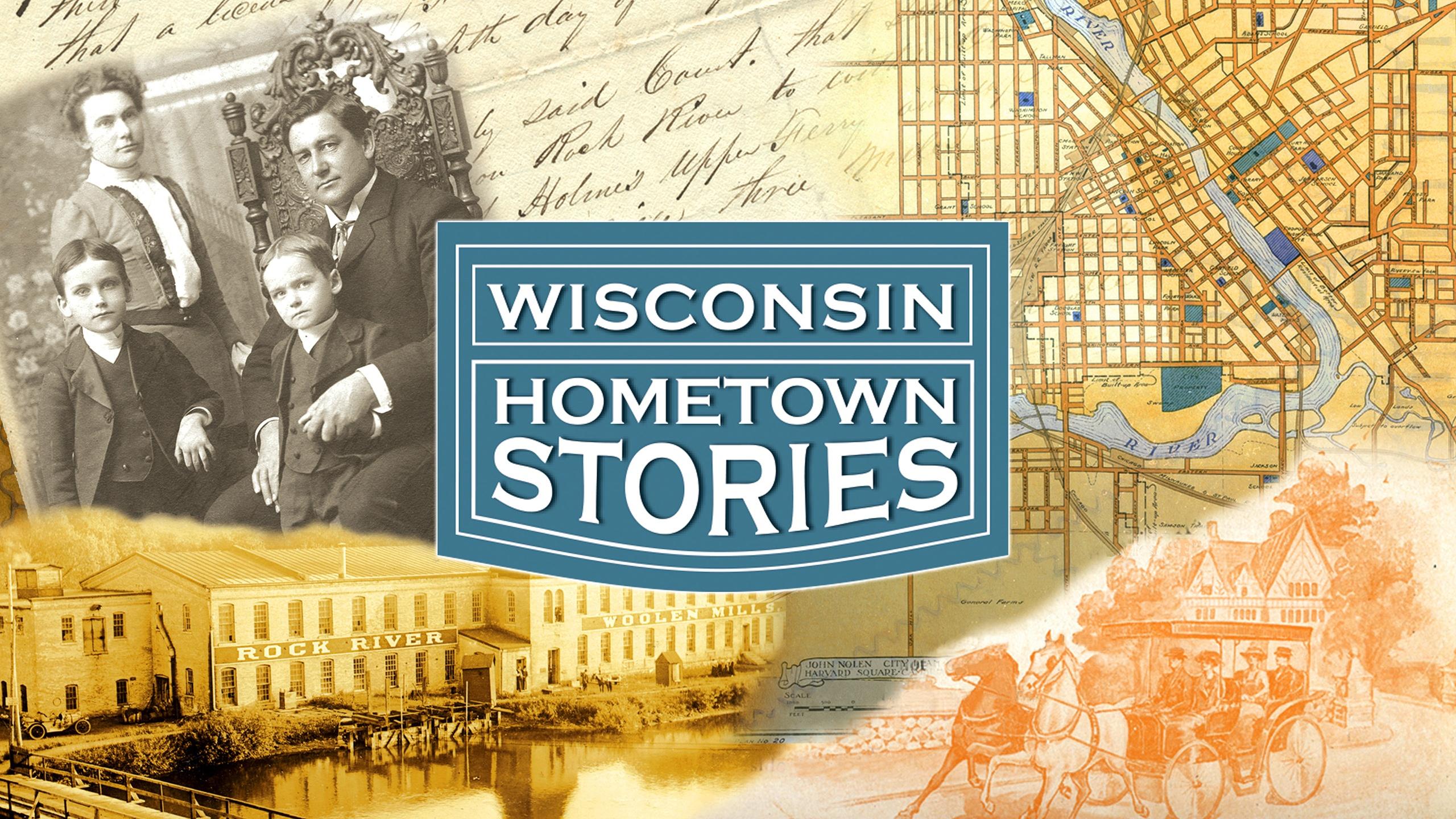




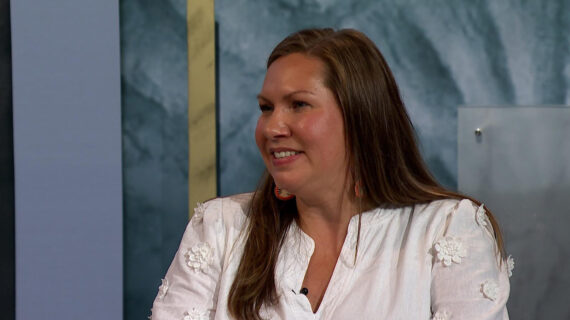
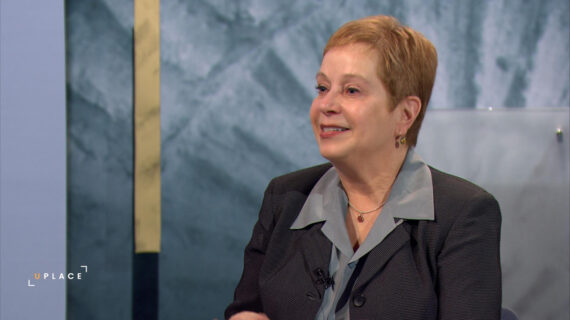

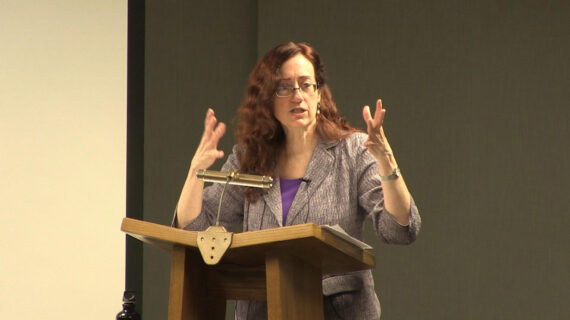
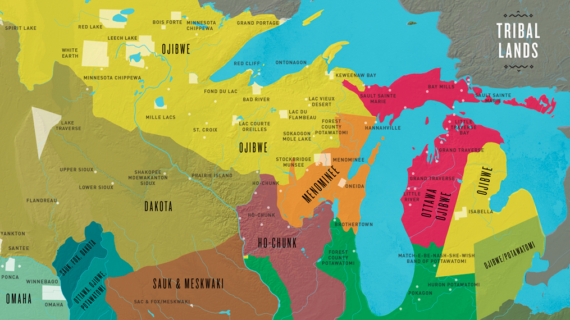
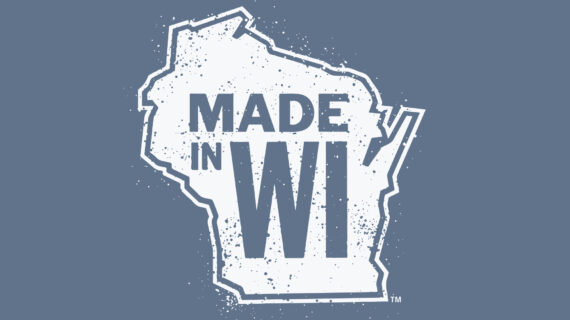

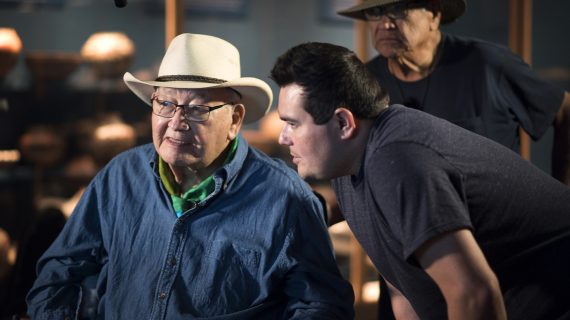

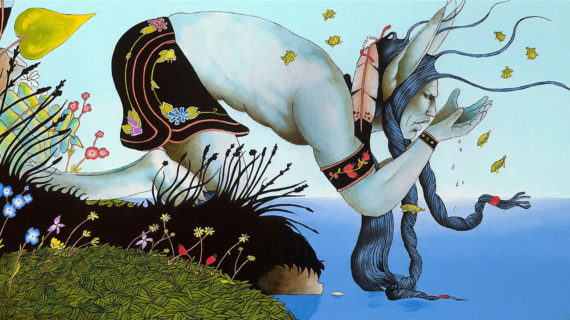

Follow Us